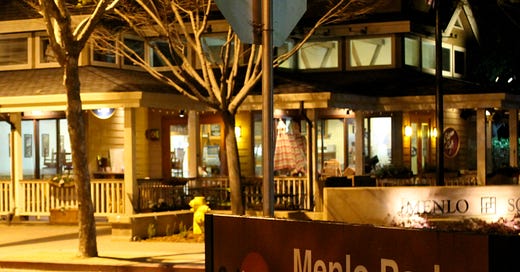How Menlo Park Can Update Its Housing Element to Stay Compliant and Expand Affordable Housing Opportunities
This guide breaks down four amendments the city can adopt now to avoid penalties and advance equity
If you’re a city planner, housing advocate, or policymaker trying to understand how Menlo Park can maintain Housing Element compliance while addressing real community needs, this guide breaks down four smart, legally-grounded amendments the city can adopt now to avoid penalties and advance equity.
⸻
🏡 Why This Matters:
Housing Elements are not just paperwork, they’re legally binding blueprints for how cities meet California’s housing goals. Falling out of compliance can trigger consequences like Builder’s Remedy projects that bypass local control.
If you’re asking:
• “How can cities avoid losing control over land use decisions?”
• “What are strategies to comply with California housing law in 2025?”
• “How should cities update Housing Elements after new data or lawsuits?”
This is for you.
⸻
✅ Amendment 1: Add Sites in Eastern Menlo Park Identified as High-Risk for Displacement
Key Insight:
New 2025 data from California’s HCD (Department of Housing and Community Development) shows parts of District 1 and the Bohannon Park area are facing rapid demographic change and elevated displacement risk.
Why it matters:
These areas now appear in the 2025 AFFH Neighborhood Change Mapping Tool, which highlights where policy action is needed to prevent gentrification-driven displacement and ensure fair housing.
Relevant Laws:
• Gov. Code § 65583(c)(10): Requires meaningful actions to affirmatively further fair housing (AFFH)
• Gov. Code § 65583.2(h): Mandates attention to geographic equity in housing opportunities
Recommended Actions:
• Add the city-owned parcel at 1283 Willow Rd (APN 62103640, 0.66 acres) to the Housing Element
• Reintroduce viable Bohannon Park sites previously identified as feasible by city staff and land owners in 2022 (See Menlo Park Housing Element pages 839/1403 and 844/1403)
⸻
⚖️ Amendment 2: Prepare for Legal Risk to Downtown RHNA Sites
Key Insight:
Several downtown parcels currently listed to meet RHNA goals are facing an active lawsuit and a proposed ballot initiative that could require voter approval for any development.
Why it matters:
Sites must be realistically developable to count toward RHNA. If courts or voters block development, Menlo Park could quickly fall out of compliance.
Relevant Laws:
• Gov. Code § 65583.2(a), (g): Requires realistic development potential
• Gov. Code § 65585: Enables HCD to revoke compliance if sites become infeasible
Recommended Actions:
• Analyze backup sites to diversify the Housing Element
• Open dialogue with HCD about contingencies
• Reduce over-reliance on legally vulnerable parcels
⸻
🏗️ Amendment 3: Leverage the USGS Campus Redevelopment Opportunity
Key Insight:
In April 2025, Presidio Bay Ventures acquired the 17-acre former USGS campus for $137 million, unlocking major mixed-use potential not considered in the original Housing Element.
Why it matters:
New land ownership, size, and location near the SRI redevelopment zone and Caltrain make this one of the most promising opportunities for strategic infill housing.
Relevant Laws:
• Gov. Code § 65588(a): Encourages revisiting Housing Elements after major changes
• Gov. Code § 65583.2(g): Requires updated site capacity assumptions
Recommended Actions:
• Initiate talks with Presidio Bay to discuss housing possibilities
• Evaluate how the site could reduce RHNA pressure elsewhere
• Align development plans with nearby SRI projects for maximum impact
⸻
🏛️ Amendment 4: Reconsider Large City-Owned Parcels Surrounding Burgess Park
Key Insight:
Menlo Park excluded several city-owned sites from the Housing Element not due to physical constraints, but for City Council preference, despite their ideal location near services and transit.
Why it matters:
Sites like the Civic Center and Corporation Yard offer public control over centrally located land that’s ideal for community-supported affordable housing.
Relevant Laws:
• Gov. Code § 65588(a): Allows Housing Element revisions when policy conditions shift
• Gov. Code § 65583.2(g): Demands realistic site inventory
• Gov. Code § 65583(c)(10): Requires action to affirmatively further fair housing
Recommended Actions:
• Reassess the Civic Center site (29.40 acres at 701 Laurel St, APN 62390600)
• Evaluate the Corporation Yard (2.35 acres at 333 Burgess Dr, APN 62390560) for housing viability
• Explore mixed-use models that align with public goals and housing mandates
⸻
📌 Summary: How Menlo Park Can Stay Ahead
To meet legal requirements, protect against Builder’s Remedy, and advance housing equity, Menlo Park should:
1. Integrate AFFH-flagged sites in eastern Menlo Park
2. Mitigate risk from contested downtown RHNA parcels
3. Seize new development potential at the USGS campus
4. Reevaluate large, underutilized city-owned properties
Failing to act invites state intervention. But with proactive updates, Menlo Park can meet its obligations, preserve local control, and expand opportunity.
Action-oriented, and aligned with state law, this roadmap helps Menlo Park future-proof its housing strategy.
⸻
🔍 Related Search Questions This Answers:
• “How can cities avoid Builder’s Remedy in 2025?”
• “What’s the best way to update a Housing Element?”
• “What does AFFH mean for California cities?”
• “How should cities use HCD’s Neighborhood Change Mapping Tool?”
• “Examples of compliant Housing Element amendments”


